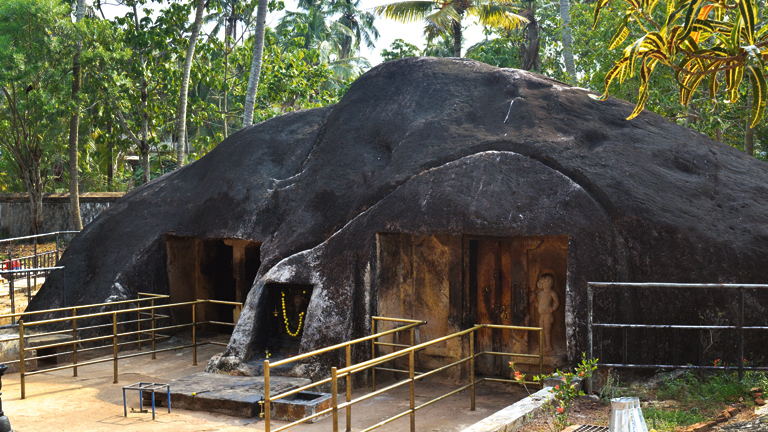The Kottukal Rock Cut Cave Temple, located in the southern Indian state of Kerala, is a hidden gem that combines history, spirituality, and intricate rock-cut architecture. Situated in the picturesque village of Kottukal in the Thiruvananthapuram district, this ancient temple is a testament to the rich heritage and artistic prowess of the region. In this article, we will delve into the history, significance, and architectural marvels of the Kottukal Rock Cut Cave Temple.
History and Origins
The Kottukal Rock Cut Cave Temple, also known as the Kottukal Cave Temple, is believed to date back to the 8th century during the reign of the Pallava dynasty. It is dedicated to Lord Shiva, one of the principal deities in Hinduism. The temple’s construction reflects the distinctive architectural style prevalent during the Pallava period, characterized by its rock-cut structures and intricate sculptures.
Architectural Features
- Rock-Cut Architecture: The most striking feature of the Kottukal Rock Cut Cave Temple is its rock-cut architecture. The entire temple is carved out of a single massive rock, creating a cave-like structure. The skilled craftsmanship of the artisans is evident in the precision with which the rock has been carved to create various chambers and sculptures.
- Main Shrine: The temple’s main shrine houses a sanctum sanctorum (garbhagriha) where the principal deity, Lord Shiva, is enshrined. The lingam (symbolic representation of Shiva) is the focal point of worship and devotion.
- Panchaloha Sculptures: The temple is adorned with sculptures carved into the rock walls. These sculptures depict various Hindu deities, mythological figures, and scenes from Hindu epics. The sculptures are intricately detailed and exhibit the artistic finesse of the Pallava period.
- Mukha Mandapa and Ardha Mandapa: The temple complex consists of a Mukha Mandapa (main hall) and an Ardha Mandapa (vestibule), both of which are adorned with sculptures and reliefs. These halls were likely used for congregational gatherings and rituals.
- Nandi Statue: In front of the sanctum sanctorum stands a beautifully carved Nandi (the bull mount of Lord Shiva) statue. The Nandi serves as the guardian and devotee of Lord Shiva and is a common feature in Shiva temples.
- Kundalas (Earrings): One of the unique features of the temple is the large earrings (kundalas) depicted on the ears of the deities in the sculptures. These earrings are believed to symbolize the magnificence and opulence of the deities.
Religious Significance
The Kottukal Rock Cut Cave Temple holds immense religious significance for devotees of Lord Shiva. It is a place of worship and pilgrimage, attracting devotees and tourists alike who come to admire its architectural beauty and seek spiritual solace.
Visiting Tips
- Respect the sanctity of the temple and follow any religious or cultural guidelines provided by the temple authorities.
- Dress modestly when visiting religious sites in India, covering your shoulders and knees.
- Photography may be restricted inside the temple complex, so inquire with the temple authorities before taking photographs.
How to Reach
- By Air: The nearest airport is Thiruvananthapuram International Airport, which is approximately 38 kilometers (24 miles) from Kottukal.
- By Rail: The nearest railway station is Varkala Railway Station, which is about 8 kilometers (5 miles) away.
- By Road: Kottukal is well-connected by road, and visitors can reach the village by taxi or private transport from nearby towns.
Conclusion
The Kottukal Rock Cut Cave Temple is a hidden treasure in the cultural landscape of Kerala, offering a glimpse into the artistic and religious heritage of the region. It stands as a testament to the architectural prowess of the Pallava dynasty and continues to be a place of reverence and wonder for devotees and tourists alike. A visit to this ancient temple is not only an exploration of history and spirituality but also an opportunity to appreciate the intricate beauty of rock-cut architecture.

